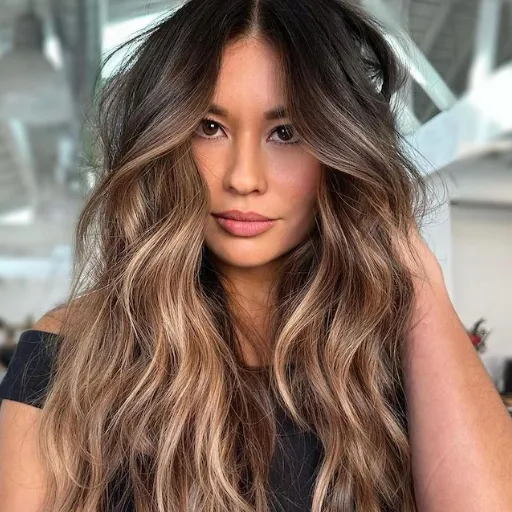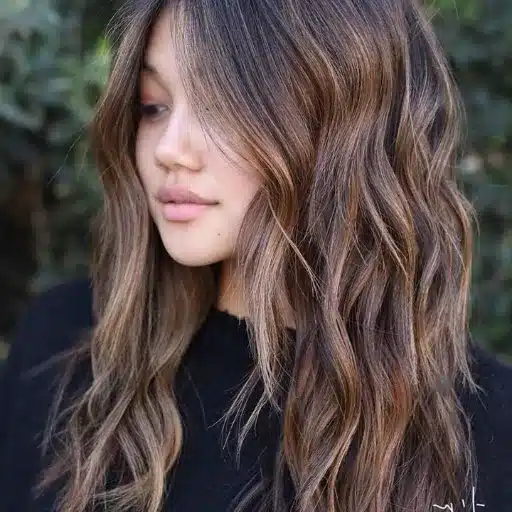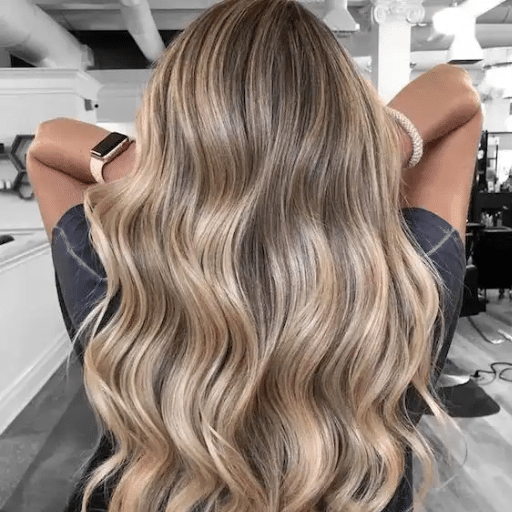Plants are the foundation of any successful garden design, and vibrant, flourishing outdoor spaces depend on the choices you make. However, not all annual flowers are worth the trouble. Some have fallen from favor among gardening experts for being old-fashioned, demanding in care, or performing poorly in modern garden conditions.
In this comprehensive guide, we’ll explore:
- Seven specific annuals that experts advise against planting
- Why these flowers might not fit well in your modern garden
- Better alternatives for an attractive and sustainable garden
- Expert tips for creating stunning garden displays
Understanding Outdated Annual Flowers

Outdated annuals consist of varieties that were popular in the past but have since fallen from favor with growers seeking more reliable or aesthetically pleasing options. Many of these varieties are high maintenance, susceptible to diseases or pests, or simply don’t thrive well in present-day gardening conditions.
Common Issues with Outdated Annuals:
- High Maintenance: Require excessive watering, specific soil conditions, or frequent pruning
- Short Bloom Period: Don’t produce flowers for extended periods
- Poor Disease Resistance: Susceptible to common garden diseases
- Limited Visual Appeal: Lack the bright colors and longevity modern gardeners prefer
What Defines an Outdated Annual Flower?
An outdated annual flower typically exhibits several key characteristics that modern gardeners find problematic:
| Characteristic | Problem | Modern Preference |
|---|---|---|
| Disease Resistance | Poor resistance to common diseases | Hardy, disease-resistant varieties |
| Flowering Period | Short blooming seasons | Long-lasting, continuous blooms |
| Color Vibrancy | Dull, pedestrian colors | Bright, eye-catching hues |
| Maintenance Level | High-maintenance requirements | Low-maintenance, easy-care plants |
| Soil Requirements | Specific, demanding soil conditions | Adaptable to various soil types |
Historical Context of Old-Fashioned Annuals
Many old-fashioned annuals were once cherished for their beauty, fragrance, and cultural symbolism. Flowers like four o’clocks or balsams carried deep meanings and were often passed down through generations. However, changing times have brought evolving tastes, and modern gardening trends now favor functionality and ease of maintenance over traditional charm.
Why Some Annuals Fall Out of Favor
Several factors contribute to the decline in popularity of certain annuals:
- Changing Gardening Trends: Modern gardeners prefer low-maintenance plants that fit busy lifestyles
- Rise of Native Plants: Increased focus on supporting local ecosystems and pollinators
- Superior Modern Hybrids: New varieties offer longer blooming periods and greater hardiness
- Climate Adaptability: Changing regional conditions favor more adaptable plant options
Top 7 Outdated Annual Flowers to Avoid

1Petunia: Once Popular, Now Overlooked
Why Experts Skip Them: While petunias were once garden staples for their splash of color and ease of growth, they’ve lost favor to alternatives like calibrachoa, which offer similar colors but better weather tolerance and lower maintenance requirements.
Main Issues:
- Suffer in scorching heat conditions
- Require regular deadheading to maintain appearance
- High maintenance compared to newer alternatives
2Impatiens: The Shade-Loving Classic
Why Experts Skip Them: Traditional impatiens have faced significant challenges, particularly from downy mildew, which has devastated many plantings in recent years.
Main Issues:
- Highly susceptible to downy mildew disease
- Unreliable performance in many regions
- Better alternatives available (New Guinea impatiens, disease-resistant hybrids)
3Snapdragon: An Old-Fashioned Favorite
Why Experts Skip Them: While snapdragons have nostalgic appeal with their distinctive dragon-shaped blossoms, they require specific growing conditions and regular maintenance that many modern gardeners find impractical.
Main Issues:
- Require well-drained soil and specific sun conditions
- Need regular deadheading for continued blooming
- Performance varies significantly with weather conditions
4Bells of Ireland: A Unique but Unpopular Choice
Why Experts Skip Them: Despite their striking appearance with tall, spire-like green stems crowned with bell-shaped calyces, Bells of Ireland have limited mainstream appeal and specific growing requirements.
Main Issues:
- Limited color palette (primarily green)
- Specialized use mainly in floral arrangements
- Not widely appreciated by general gardeners
5Shiso: A Culinary Herb with Limited Appeal
Why Experts Skip Them: Shiso’s unique flavor profile—a combination of mint, basil, and anise—can be polarizing and unfamiliar to many gardeners, limiting its broad appeal.
Main Issues:
- Strong, polarizing flavor not universally appreciated
- Limited familiarity outside of East Asian cuisines
- Specialized culinary use rather than ornamental value
6Mexican Butterfly Weed: Beauty Over Practicality
Why Experts Skip Them: While beautiful with striking orange to red flowers that attract butterflies, this plant can become invasive and requires careful management.
Main Issues:
- Rapid growth can become invasive in some regions
- Requires constant management and pruning
- Milky sap can cause skin irritation
- May not be suitable for all regional climates
7Other Old-Fashioned Annuals to Skip
Additional Problematic Varieties:
- Cosmos: Can freely reseed and require annual area management
- Four O’Clock Flowers: Aggressive self-seeding requires constant control
- Sweet Alyssum: Performs poorly in hot climates and needs frequent replanting
Alternatives to Outdated Annuals

When selecting alternatives to outdated annuals, prioritize plants that are both attractive and well-suited to your local climate conditions.
Recommended Modern Alternatives
| Modern Alternative | Benefits | Best Growing Conditions | Replaces |
|---|---|---|---|
| Zinnias | Bright, long-lasting colors; attracts pollinators | Full sun, warm weather | Petunias, Snapdragons |
| Marigolds | Pest-resistant, continuous blooming | Full sun to partial shade | Various old-fashioned annuals |
| Begonias | Reliable color, low maintenance | Partial shade | Traditional Impatiens |
| New Guinea Impatiens | Disease-resistant, vibrant colors | Partial shade | Traditional Impatiens |
| Native Annuals | Climate-adapted, low water needs | Varies by region | Non-native varieties |
Annuals to Try for a Fresh Look
Top Picks for Modern Gardens:
- Zinnias: Bold colors, diverse hues, easy to grow, attracts butterflies
- Marigolds: Natural pest deterrent, continuous blooming, warm colors
- Begonias: Perfect for shade, lush colors, minimal maintenance
- Native Annuals: Environmentally sustainable, climate-adapted, low water requirements
Perennial Options: Sustainable Choices for Your Garden
For long-term garden sustainability, consider incorporating perennials that are well-suited to your region’s climate and soil conditions:
- Native Perennials: Asters, coneflowers – support local ecosystems and pollinators
- Drought-Tolerant Options: Lavender, sedum – beautiful blooms with minimal water needs
- Sun/Shade Varieties: Black-eyed Susans (sun), Hostas (shade) – versatile placement options
Design Strategies for Modern Gardens

Combining Old-Fashioned Charm with Modern Trends
Create a balanced garden design by thoughtfully combining traditional elements with contemporary features:
- Use classic materials (wrought iron, weathered wood) with modern planters
- Pair traditional flowers (peonies, roses) with contemporary plants (ornamental grasses, natives)
- Incorporate geometric pathway designs with cottage-style plantings
Designing a Cottage Garden with Modern Annuals
Achieve the perfect balance of classic cottage garden charm with reliable modern plants:
- Select Vibrant, Fast-Growing Annuals: Zinnias, cosmos, nasturtiums
- Add Perennial Structure: Include long-lasting perennials for consistent framework
- Use Contemporary Color Schemes: Deep purples with oranges, or soft pastels with bold accents
- Layer Planting Beds: Informal cottage structure with clean lines and focal points
- Choose Climate-Appropriate Plants: Ensure all selections thrive in your local conditions
Creating Visual Interest with Big Blooms
When incorporating large-flowered plants, strategic placement and balance are key:
Big Bloom Strategy:
- Select Statement Plants: Hydrangeas, peonies, sunflowers
- Strategic Placement: Position at garden entrances and bed centers
- Seasonal Planning: Stagger blooming periods for season-long interest
- Balance with Smaller Plants: Use medium and small plants with contrasting textures
Expert Tips from Fine Gardening Magazine
Professional garden designers recommend following these key principles:
- Create Focal Points: Use bright plant groupings or ornamental features to anchor spaces
- Vary Heights, Colors, and Textures: Create contrast and visual interest
- Plan for Seasonal Interest: Include plants that bloom throughout different seasons
- Add Structural Elements: Incorporate perennials, evergreen shrubs, or ornamental grasses
- Consider Growing Conditions: Match plants to soil, sunlight, and water requirements
Aim for Dynamic Beauty: Create gardens that evolve and change through the seasons
References
-
Martha Stewart: 7 Outdated Annual Flowers That Experts Say to Skip—and Why – This article lists specific annual flowers that experts recommend avoiding, along with reasons why they are considered outdated.
-
The Garden Diaries: Growing Heirlooms – Old Fashioned Annuals That Rock!! – While focusing on heirloom flowers, this source provides insights into old-fashioned annuals and their relevance in modern gardening.
-
Gardening Know How: 9 Old-Fashioned Flowers To Transport You To Another Time – This article discusses old-fashioned flowers, offering a perspective on their charm and potential drawbacks in contemporary gardens.
Frequently Asked Questions (FAQ)
What are some old-fashioned annuals that are worth trying in my garden?
Old-fashioned annuals like petunias and snapdragons are making a comeback in contemporary gardens. These flower cultivars not only bring a sense of nostalgia but also offer vibrant colors that can enhance any flower garden. Gardening experts recommend swapping out common modern annuals for these showy options, as they thrive in full sun to partial shade and are relatively easy to grow from seed. Additionally, consider mixing in some beautiful annuals such as zinnias, which can provide a stunning visual appeal throughout the summer long. Whether you’re planting in garden beds or containers, these classic flowers can add charm and elegance.
How can I incorporate perennial flowers with outdated annuals?
Combining outdated annual flowers with perennial flowers can create a balanced and visually interesting garden. For instance, pairing old-fashioned annuals like balsam flowers with hardy perennials such as yarrow can result in a lively display that lasts all season. This intentional garden design not only showcases a variety of colors but also allows for plants that self-sow, ensuring that your garden remains vibrant year after year. Experts say to skip trendy plants and instead focus on those that have stood the test of time, offering both beauty and resilience. By using a mix of annuals and perennials, you can enjoy a dynamic garden that evolves with each season.
What are some outdated annual flowers that attract hummingbirds?
Certain outdated annual flowers are well-known for attracting hummingbirds. Flowers such as Mexican butterfly weed and bells of Ireland can provide the bright colors and nectar these birds seek. These specific plants not only enhance the visual appeal of your garden but also support local wildlife, making them a great choice for an intentional garden design. Incorporating old-fashioned flowers like petunias can also draw in these pollinators, creating a lively atmosphere. To ensure a steady supply of nectar, consider planting a mix of annuals in colder zones and those that are easier to grow from seed.
Can I grow old-fashioned flowers indoors?
Yes, many old-fashioned annuals can be successfully grown indoors, provided they receive adequate light and care. Plants like impatiens and petunias thrive in indoor environments, especially when given the right conditions such as full sun to partial shade. By choosing beautiful annuals that are also compact, you can create a stunning indoor flower garden. These plants can be grown in pots or hanging baskets, adding a touch of nature to your home decor. Moreover, using flower seeds from easy-to-grow cultivars can make the process even more rewarding and enjoyable.
Why are outdated annual flowers still relevant in modern gardens?
Outdated annual flowers remain relevant due to their unique characteristics and the sense of nostalgia they evoke. Many of these flowers, such as zinnias and snapdragons, offer vibrant colors and are often hardy in various climates. Gardening experts recommend incorporating these classics as they provide an effortless charm that newer cultivars sometimes lack. Additionally, they can be a great way to diversify your flower garden, bringing back memories while enhancing the garden’s aesthetic appeal. With the growing trend of intentional garden design, these old-fashioned options are making a comeback, reminding us of the beauty found in tradition.









